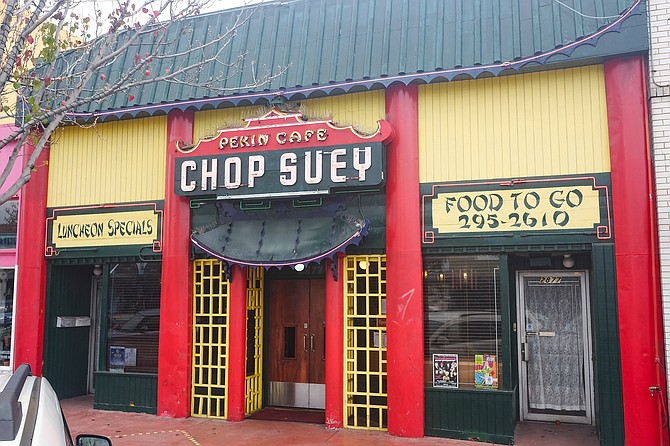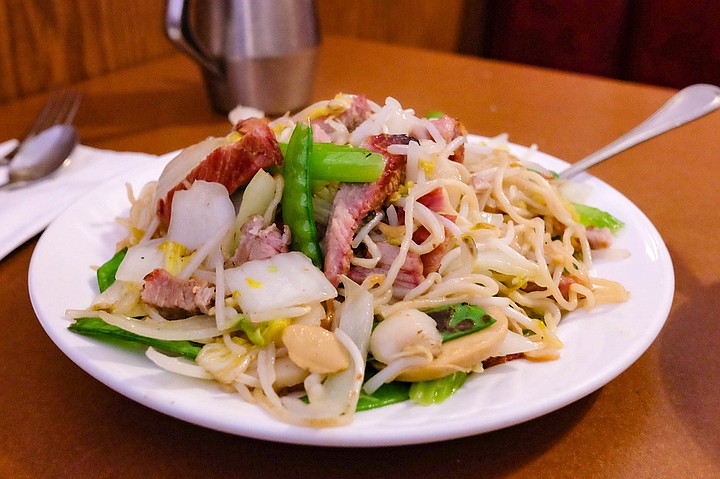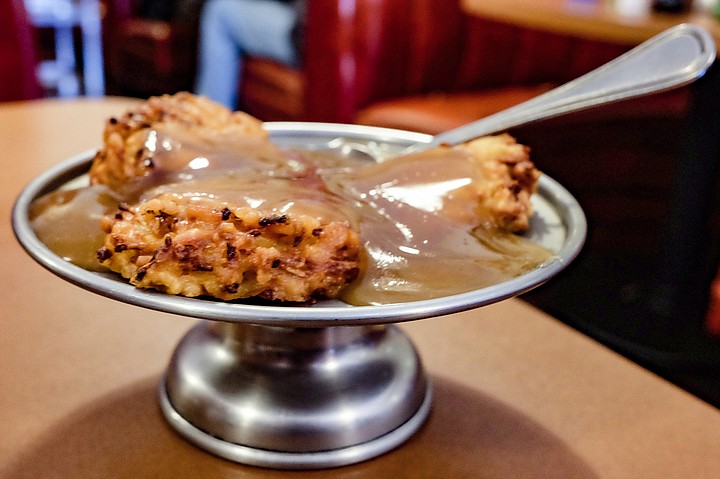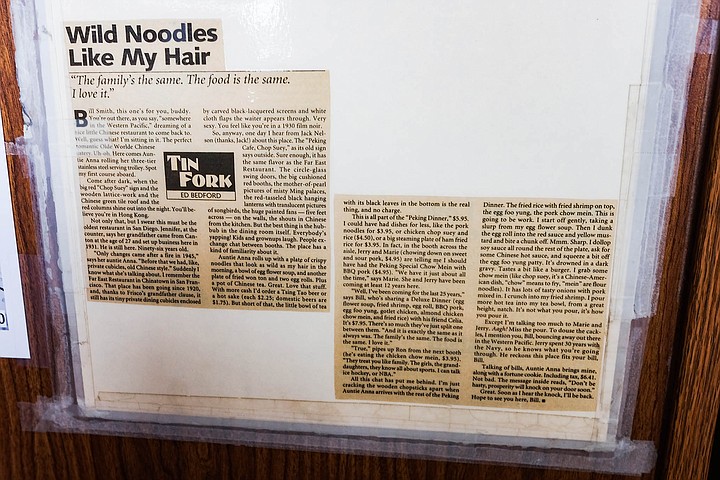 Facebook
Facebook
 X
X
 Instagram
Instagram
 TikTok
TikTok
 Youtube
Youtube

It doesn’t look like a restaurant that’s about to close. Four parties have shown up at once during lunch rush, and the staff hustles to turn over red leather booths as they become available. But in the waiting area customers around me marvel this could be the last time any of us eat here, at San Diego’s oldest restaurant.
Peking Restaurant has said it will shut its doors in March, nearly nine decades since it opened, in 1931. The sign out front still gives its old name: Pekin Cafe Chop Suey. The iconic storefront has added color to University Avenue since being added in 1935: bright red columns stand in contrast to painted yellow wood, and dark green accents modeled after the curved gables of tradition Chinese architecture. It lights up in neon at night. It’s everything urbane San Diegans of the 1940s and 50s could have wanted in a Chinese restaurant.

Near the register, there’s a Tin Fork from the Readerwrite-up taped to the wall. It’s not dated but was written at a time when the red leather booths were still screened in for intimacy, and when the Peking Special Chow Mein with BBQ pork cost $4.95. Mine costs $10 today. Still one of the better deals in North Park.
This chow mein is effectively the namesake chop suey here. Chop suey is a term I mostly associate with old movies and TV shows; or maybe just Looney Toons. The internet tells us pedantically that chop suey isn’t a noodle dish, and if you feel that way you can get it with rice. Either way, when eating in a quintessentially midcentury Chinese-American restaurant, one might as well eat the quintessential midcentury Chinese-American restaurant dish.

The same reasoning goes into my order of egg foo yung. Once a cultural touchstone of sorts, the egg patty dish has long since been overshadowed in popularity by the likes of dumplings, orange chicken, mu shu pork, etc. Really, after a century, Chinese dining has become an institution in America, to the point we’re all pretty aware there are hundreds of alternatives worth eating, whether authentic to China, or developed in Chinese restaurants to favor American palates.
If I have seen egg foo yung on menus lately, I’ve never thought to order it. I’m glad I made it in to Peking Restaurant to try it. Sort of like a crab cake, made with egg and a bit of cabbage, smothered in gravy. I may bring friends back to share the pork, chicken, or shrimp versions.

I’ll have to do it soon; rumors suggest the last day could be as soon as March 2. This restaurant’s not closing for the usual reasons — people still eat here — but reportedly because it’s been a family-run enterprise all these years, and the latest generations are ready to move on.
When it goes, the oldest restaurants in town will be the Waterfront Bar and Las Cuatro Milpas, each of 1933.


It doesn’t look like a restaurant that’s about to close. Four parties have shown up at once during lunch rush, and the staff hustles to turn over red leather booths as they become available. But in the waiting area customers around me marvel this could be the last time any of us eat here, at San Diego’s oldest restaurant.
Peking Restaurant has said it will shut its doors in March, nearly nine decades since it opened, in 1931. The sign out front still gives its old name: Pekin Cafe Chop Suey. The iconic storefront has added color to University Avenue since being added in 1935: bright red columns stand in contrast to painted yellow wood, and dark green accents modeled after the curved gables of tradition Chinese architecture. It lights up in neon at night. It’s everything urbane San Diegans of the 1940s and 50s could have wanted in a Chinese restaurant.

Near the register, there’s a Tin Fork from the Readerwrite-up taped to the wall. It’s not dated but was written at a time when the red leather booths were still screened in for intimacy, and when the Peking Special Chow Mein with BBQ pork cost $4.95. Mine costs $10 today. Still one of the better deals in North Park.
This chow mein is effectively the namesake chop suey here. Chop suey is a term I mostly associate with old movies and TV shows; or maybe just Looney Toons. The internet tells us pedantically that chop suey isn’t a noodle dish, and if you feel that way you can get it with rice. Either way, when eating in a quintessentially midcentury Chinese-American restaurant, one might as well eat the quintessential midcentury Chinese-American restaurant dish.

The same reasoning goes into my order of egg foo yung. Once a cultural touchstone of sorts, the egg patty dish has long since been overshadowed in popularity by the likes of dumplings, orange chicken, mu shu pork, etc. Really, after a century, Chinese dining has become an institution in America, to the point we’re all pretty aware there are hundreds of alternatives worth eating, whether authentic to China, or developed in Chinese restaurants to favor American palates.
If I have seen egg foo yung on menus lately, I’ve never thought to order it. I’m glad I made it in to Peking Restaurant to try it. Sort of like a crab cake, made with egg and a bit of cabbage, smothered in gravy. I may bring friends back to share the pork, chicken, or shrimp versions.

I’ll have to do it soon; rumors suggest the last day could be as soon as March 2. This restaurant’s not closing for the usual reasons — people still eat here — but reportedly because it’s been a family-run enterprise all these years, and the latest generations are ready to move on.
When it goes, the oldest restaurants in town will be the Waterfront Bar and Las Cuatro Milpas, each of 1933.
Comments